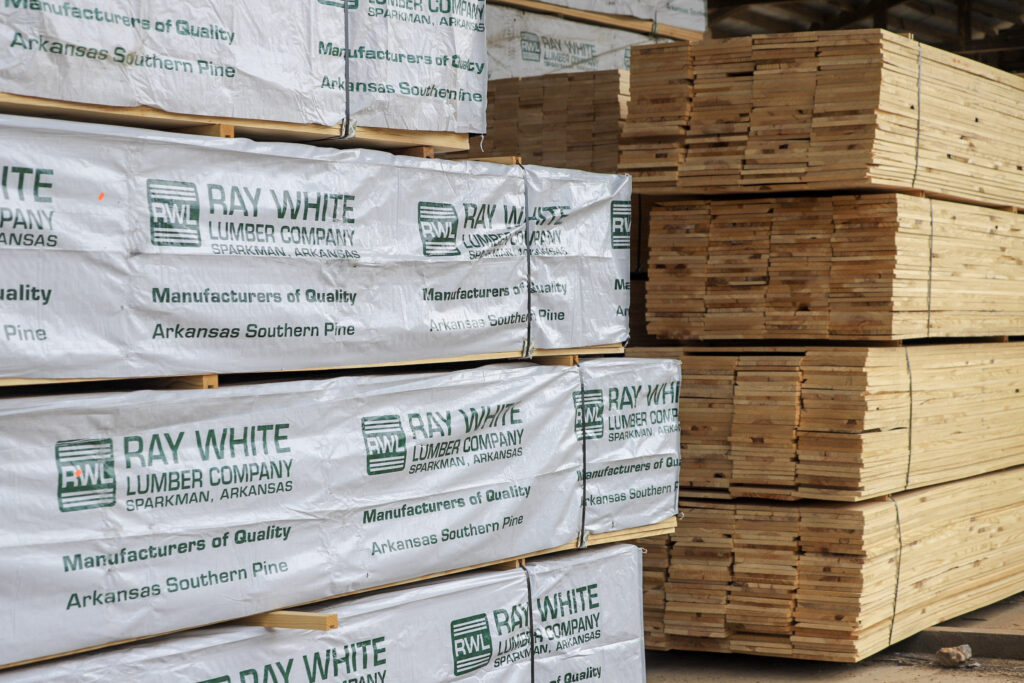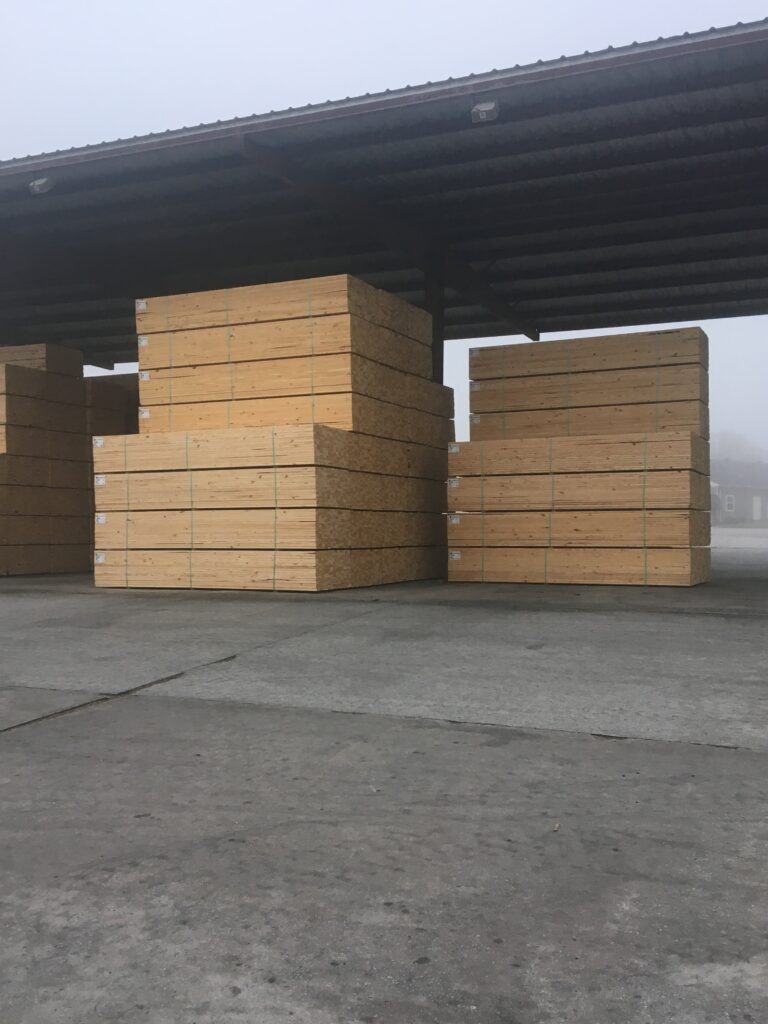Lumber Storage
Store Your Lumber
Properly to Keep It Strong
Storing Southern Pine lumber properly may sound easy, but it’s more than just placing a tarp over a pile of wood.
Lumber that is about to be used needs to be properly seasoned and stored to provide optimal dimensional stability. To minimize shrinkage, the Southern Pine Inspection Bureau’s Standard Grading Rules for Southern Pine Lumber require dimension lumber 2″ or less in thickness be kiln-dried or seasoned to a moisture content not exceeding 19%. This results in an average moisture content of 15% at the time of use. Additional conditioning will take place when lumber is stored and used since it adjusts to the moisture content of its end-use environment.
For interior items, such as flooring, millwork, and furniture, the end-use moisture content will average between 6% in the dry southwestern U.S. and 11% in the humid southern U.S. Gulf region. For exterior items, such as framing, siding, and sheathing, the end-use moisture content will average between 7% and 14%, landing at 12% in most areas of the U.S.
Proper receiving, unloading, storage, handling, installation, and bracing of lumber after delivery helps maintain material quality during construction and service life.
Follow these simple rules to help ensure you’re storing lumber properly to increase product performance at the job site:
- Inspect lumber upon delivery for proper grade marking and moisture content, and for other conditions that may require attention, such as mold.
- Unload lumber in a dry place – not in wet or muddy areas.
- Elevate lumber on stringers to prevent absorbing ground moisture and to allow air circulation. Do not store lumber directly on the ground.
- Cover lumber stored in an open area with a material that protect it from the elements. Polyethylene or similar non-porous materials form a vapor barrier, so it is critical to allow for ventilation around the material to prevent condensation on the underside of the covering.
- Enclose framing lumber under a roof as soon as possible.
- Store exterior lumber – such as siding and porch flooring – in a covered outdoor area.
- Store interior items such as flooring, millwork, and cabinets in the enclosed conditioned area where installation will occur.
Additional protection is needed when lumber comes in paper-wrapped packages or has been treated with a weather-protective coating. However, availability is limited, and weather-protective coatings are generally only effective for three to six months. Damage to the paper during transport can reduce its effectiveness, and protection is lost when paper wrappings are removed.

